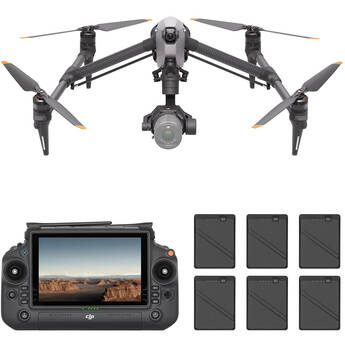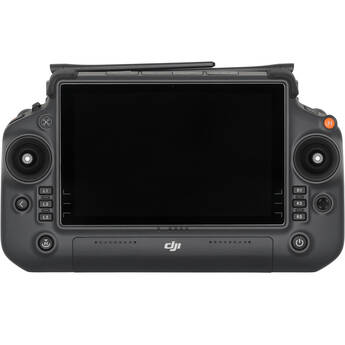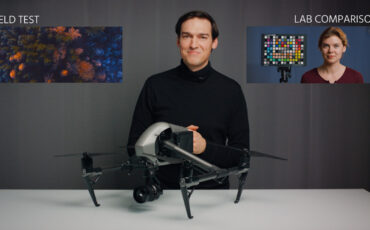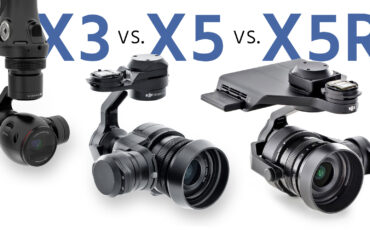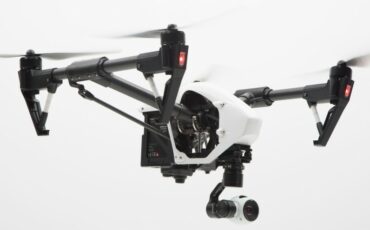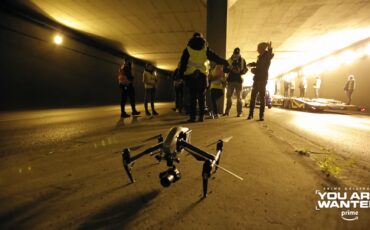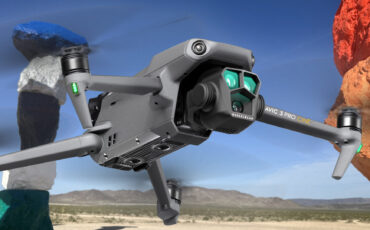DJI Inspire 3 Drone –Everything You Need to Know
Inspire 3 is DJI’s new full-frame 8K cinema drone with interchangeable lenses and a wide variety of hardware and software improvements compared to the last generation. In fact, DJI received one of our “NAB 2023 Best of Show” awards for this drone. We visited the DJI booth on the NAB show floor and asked Ferdinand Wolf, Creative Director for DJI Europe, about the new drone and what makes it so special.
Right before this year’s NAB Show DJI announced the much anticipated new generation of its professional cinema drone – the Inspire 3. Please make sure to check my article from the announcement day, which includes all the new features and specs.
After DJI skipped last year’s much smaller “first post-Covid” NAB show, they pulled out all stops this year and had a massive booth at the Las Vegas convention center. Among many Ronin 4D units rigged in various positions, there were multiple Inspire 3 units on display plus a huge “cage” where DJI pilots flew (as in hovered) the Inspire 3 for the spectators to see. We had the chance to talk to Ferdinand Wolf from DJI Europe about their new cinema drone. Let’s recap what we found out.
DJI Inspire 3 – Zenmuse X9-8K Air unit
The heart of the Inspire 3 drone is the new Zenmuse X9-8K Air camera system that houses a 3-axis gimbal stabilized 8.1K full-frame sensor. This shoots up to 8K 75fps in ProRes RAW, 8K 25fps in CinemaDNG, or 4K 120fps slow motion video. DJI claims 14+ stops of dynamic range. The sensor also has a dual-native ISO of 800/4000 (up to 30fps) or 320/1600 (above 30fps).
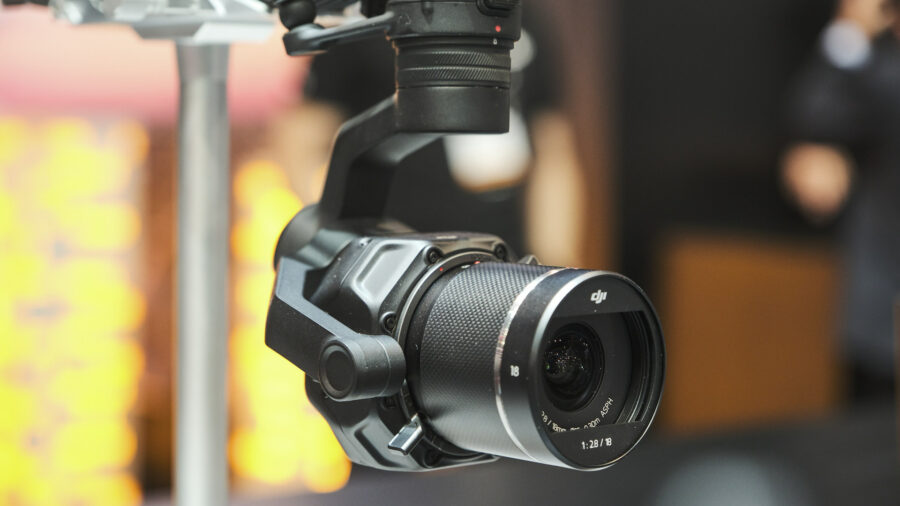
Regarding the Zenmuse X9-8K (Air) unit cross-compatibility between the Inspire 3 and Ronin 4D, we found out that the Zenmuse X9-8K Air is a lightweight version that can only be used with the Inspire 3 and it even has a slightly different mounting system than the Ronin 4D. Wolf told us this is simply to keep the weight of the Air camera unit as low as possible. Ronin 4D will, however, get the same 8K sensor very soon in a slightly more robust Zenmuse X9-8K version.
DJI Inspire 3 – body improvements
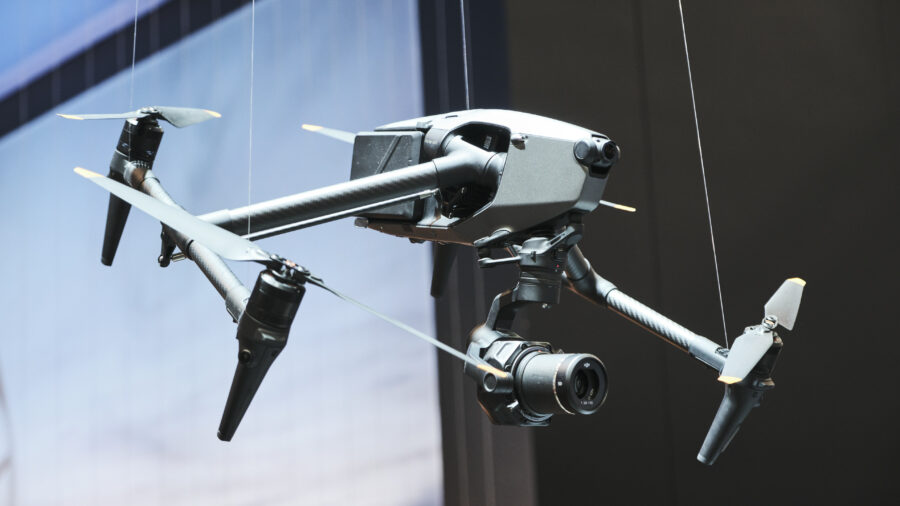
The drone’s body resembles the good old Inspire 2, but there are a few improvements as well. Mainly, the new 161° FPV camera is now integrated into the body. It also features a larger sensor with better low-light visibility. The obstacle sensors are integrated into the legs and the automatic obstacle avoidance system can be turned off, but keeping the visual aids for obstacles for the pilot to make the decision.
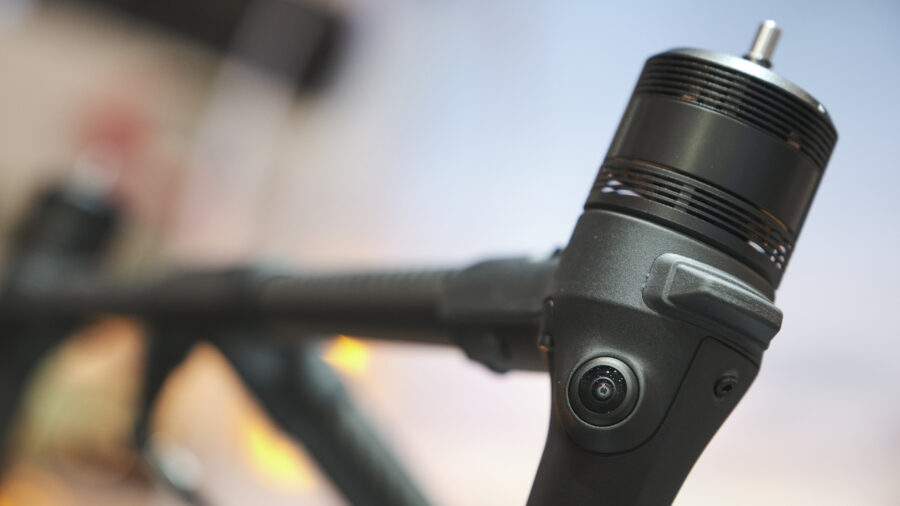
DJI Inspire 3 uses the same SSD media with integrated USB-C slot as the Ronin 4D so these can be mixed and matched. They slot right into the drone’s body.
The new TB51 battery packs have higher voltage and better low-temperature performance. Because there are two batteries on the drone, they can be hot-swapped. The packs are still under 100Wh so they can go into the carry-on luggage on an aircraft.
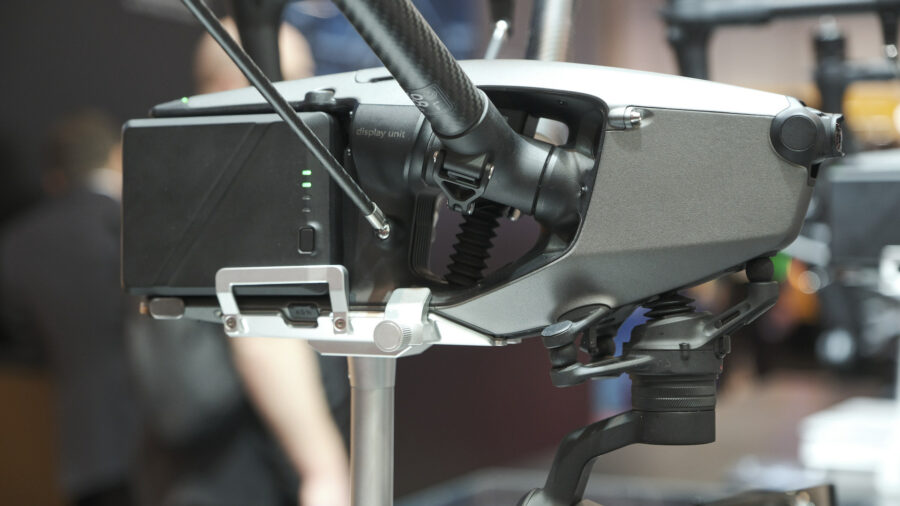
Tilt boost mode lowers the arms with motors and tilts the drone’s nose upwards which allows for up to 80° upward filming position for the camera. Additionally, the standard v-shape of the arms can go 15° higher to keep them out of the way of the camera when flying with sharp turns, etc.
DJI Inspire 3 – software improvements
Waypoint Pro is now included in the system:
- automatic repeatable routes with centimeter-level precision (with the RTK ground unit).
- 3D dolly mode has the route set, but the pilot can adjust the speed in case the action in the take is slower than the previous one.
In a two-operator mode, both operators can work far away from each other as long as they have a connection to the drone itself (up to 15km line of sight). The drone can also fly very slowly (all the flight modes are fully configurable – maximum speeds etc.) and very low above the ground to basically mimic a dolly.
The Inspire 3 is also compatible with the DJI High-Bright monitor and therefore operators can use the Master Wheels and other useful control tools from the DJI ecosystem.
DJI RC Plus is included
The remote controller that comes with the Inspire 3 is the DJI RC Plus that has an integrated bright 7″ 1200 nits display for operating at direct sunlight. The remote has a weather-proof body with multiple function buttons that can be freely assigned.
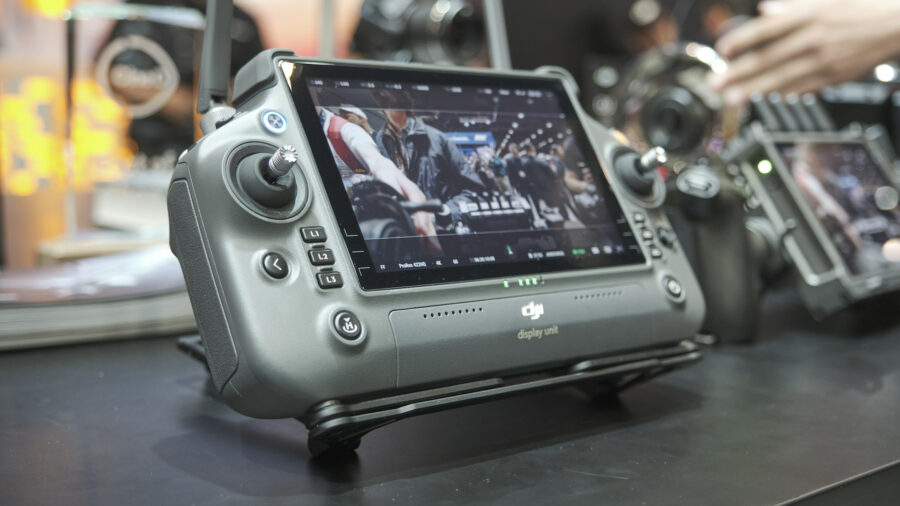
The built-in battery lasts for up to 3 hours and there is an additional hot-swappable battery at the back that provides additional 3 hours of operation. The remote includes belly support to comfortably operate it during long takes as well as a special comfortable harness.
Lensing – longer focal length coming soon
Right now, the drone is compatible with four DJI DL full-frame prime lenses:
- 18mm f/2.8 ASPH lens – newly released
- 24mm f/2.8 ASPH LS lens
- 35mm f/2.8 ASPH LS lens
- 50mm f/2.8 ASPH LS lens
Unfortunately, the recently announced DJI 17-28mm T3.0 ASPH PZ lens has been designed for the Ronin 4D and its larger Zenmuse X9 units, so it is too heavy for the drone and its X9-8K Air gimbal, and therefore not compatible.
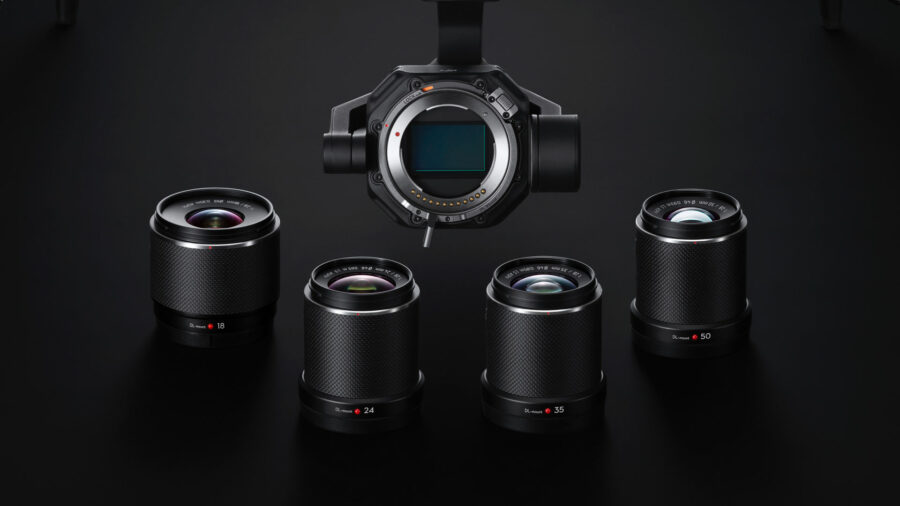
The good thing is that Ferdinand Wolf told us DJI is working on bringing an even longer focal length option for the Inspire 3 in the near future. I assume this will most likely be an 85mm prime lens which would make a lot of sense. I would personally even like to see a “135mm-ish” lightweight prime. I guess we will have to wait and see what DJI’s lens department is cooking up. Which focal length would you like to see for the Inspire 3?
Price and availability
DJI Inspire 3 drone can be pre-ordered now for $16,499 (around €12,400 plus VAT in Europe). Besides the drone itself, the price includes the RC Plus remote controller, six battery packs, 1TB SSD, a trolley, and all the necessary spare parts, chargers, covers, etc. In case you will need another RC Plus unit for the second operator, they sell for $1,600. Furthermore, this should be obvious, but for the drone to be ready-to-fly and shoot, you will also need to purchase a compatible DJI DL prime lens (or lenses) – starting at $1,199 (50mm f/2.8). The shipping of the Inspire 3 should start in June 2023.
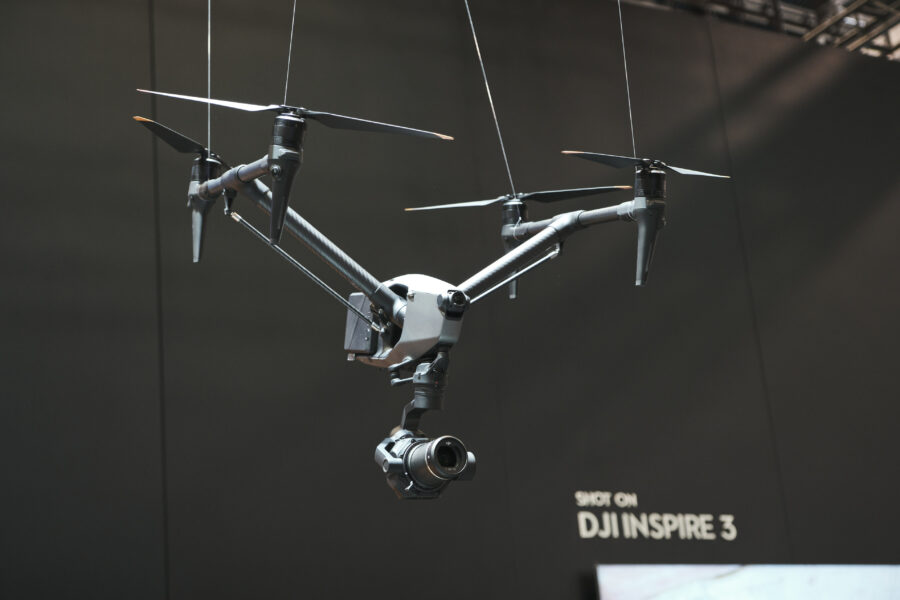
Last but not least, we are expecting to get a review unit of the Inspire 3 in our office in the coming days, so please stay tuned to CineD for the upcoming review and Lab Test of the Zenmuse X9-8K Air.
Do you use DJI Inspire 2 for your production? What do you think of the innovations of the Inspire 3? Are you considering upgrading to the new platform? Let us know in the comments section underneath the article.
